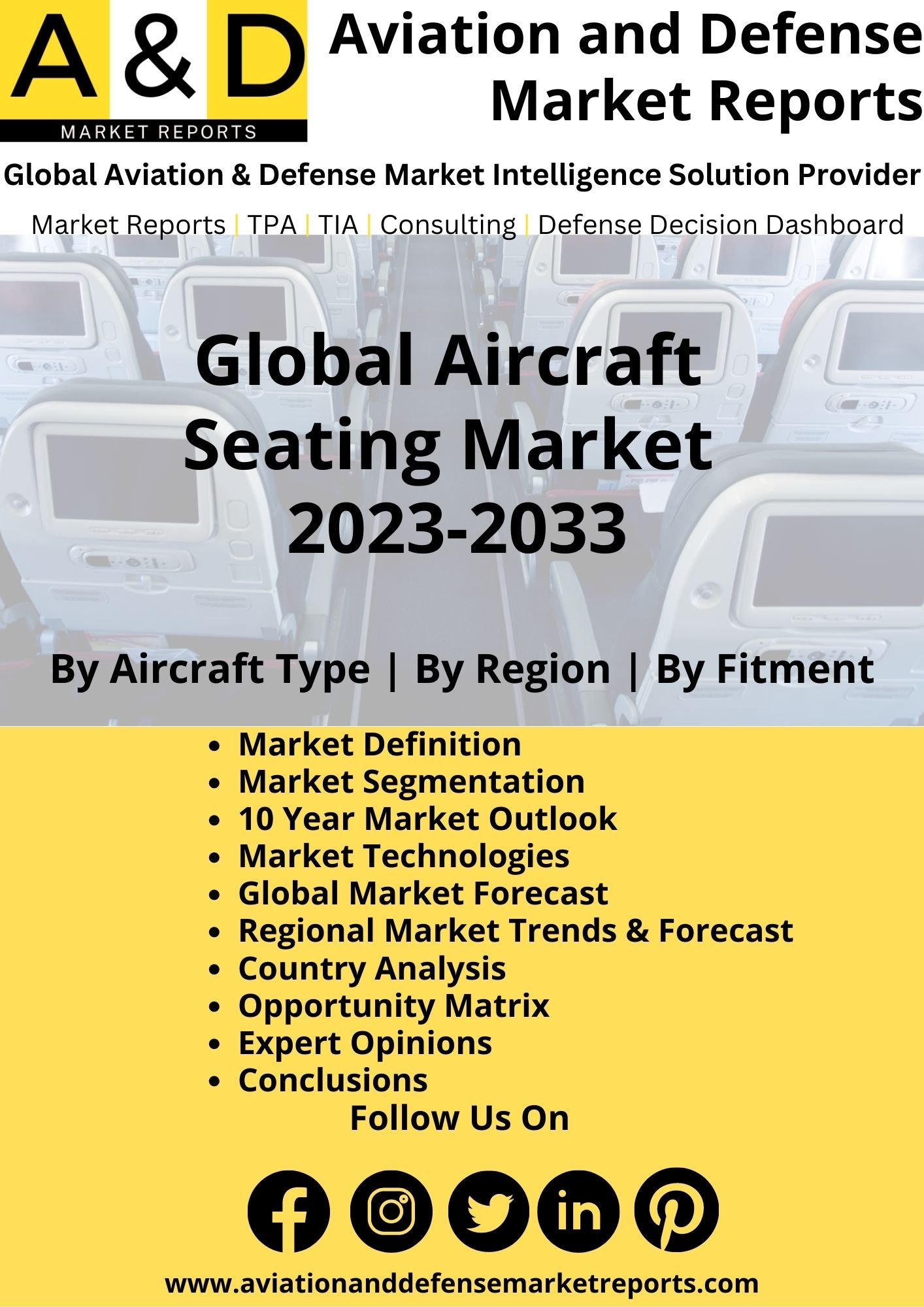Description
Aircraft Seating Market
Frequently Asked Questions of ASM
A significant portion of a passenger’s comfort and safety during a trip is provided by the aircraft seating. The weight of the interiors of aircraft seating market analysis is significantly increased by the weight of the seats. Lightweight designs (materials, configuration, and shape) are recommended for aircraft interiors to reduce fuel expenditures. Thus a general aircraft seating market trends within this market is moving toward lightweight seats while keeping passenger comfort in check.
A quick overview of the general aircraft layout suggests that a majority of the population has access to affordable and practical flying options in economy class. While electrical recliners are utilized in first class or business class aircraft, mechanically reclining seats are frequently seen in economy class. There is a fold-down table in economy class in addition to a recliner. For domestic flights, the seat pitch ranges from around 28 to 36 inches. The pitch on international aircraft is often 30 to 32 or 30 to 36 inches.
Major factors driving Aircraft Seating Market Growth
The rising demand for commercial aircraft Seating Market growth models is one of the main reasons anticipated to propel the aircraft seating industry. This is mostly caused by the increased popularity of air travel in both developed and emerging nations. The gradual recovery from the pandemic and its effect on the economy has caused a progressive re-opening of the global markets, stimulating both business and leisure-based travel. As of May 2022, it was noted that for four months in a row, Asia Pacific airlines experienced significant overseas growth, achieving a year-over-year (YoY) recovery rate of 453.3% in May, and a significant increase from 103.5% in January 2022. As the region gradually reopens, it is anticipated that the positive growth rate will persist.
One of the main drives that necessitate the requirement for increased fleet size is observed to be increased RPK and CTK. In May 2022, as per IATA, the international RPKs have already reached 64.1% of their pre-crisis levels as the global industry’s recovery had progressed. In May, domestic RPKs on a global scale achieved 76.7% of the 2019 level. Global RPKs increased monthly by 10.7% in comparison to April 2022. (MoM). Additionally, several airlines have been reusing older aircraft models while introducing new technologies, both of which are expected to fuel this market’s expansion.
Trends influencing the Aircraft Seating Market Size
Consumer satisfaction and comfort are noted to be some of the key parameters that outline the trends associated with the aircraft seating market size. The passenger comfort parameter plays an especially important role within the luxury airlines as well as premium class passengers segment. However, trends suggest that the market for economy class is rather lucrative owing to its wide passenger base. Hence airlines have been trying to enhance the travel experience of the passengers by introducing factors like luxury seating.
Numerous airlines, especially illustrious ones like Lufthansa, are increasing the level of luxury for the economy class. The airlines started providing their economy class passengers with high-quality food and beverages in 2020. The capability was made available for short- and medium-distance trips. The committed partner for this facility was Dead & David. The airline aggressively promotes both the short- and long-haul aircraft’ generous legroom. According to Lufthansa, long-haul flights include large seat cushions that can extend up to 40 cm. To ensure the comfort of the passenger, each seat has a headrest that can be adjusted separately.
Aircraft Seating Market Forecast & Dynamics
As per recent statistics, it is noted that the demand for new aircraft models has been expanding across the global markets owing to the growing number of passengers. From an OEM perspective, as per recent reports, it is noted that there are roughly 7,000 aircraft on Airbus’ backlog and a little over 5,000 on Boeing’s. Thus, suggesting a potential market for aircraft seats in the two organizations’ supply chain. There are around 25 manufacturers of aircraft seats worldwide in an Aircraft Seating market forecast where innovation and cost competitiveness are critical factors. Collins Aerospace, Safran, and Thompson Aero Seating are the three main participants.
Aircraft Seating Market Analysis for Recent Developments
The barriers to entry within this market are high, however, the number of new entrants within this segment has been increasing thus bolstering the competition. For instance, the well-known automotive manufacturer Recaro unveiled its CL3810 economy class and CL6720 business class seats, both of which make use of lightweight construction techniques and materials. Additionally at AIX, Recaro disclosed that 100 new Airbus A320 and A321 aircraft operated by KLM Royal Dutch Airlines (KLM), Transavia France, and Transavia Airlines from the Netherlands would be equipped with BL3710 business class seats and SL3710.
The world’s top manufacturer of economy class seats, Recaro Aircraft Seating, has used a number of strategies to manage the post-pandemic supply chain constraints affecting aircraft interiors and the larger aviation industry. One strategy involves using alternative, reliable sources for certain parts. However, Recaro anticipates that embedded in-flight entertainment will be the link in the chain that takes a little longer to recover. Recaro Aircraft Seating has been able to use, it for a range of commodities, despite the difficulties. Because they oversee the design and manufacturing quality of the seat, seat makers are in charge of integrating electronics into aircraft seats and making sure that IFE parts are included in Technical Standard Order (TSO) drawings. To put it briefly, they store data related to integrated IFE/seats. However, in the context of aviation’s efforts to become a more sustainable industry, the trend toward much larger IFE screens being added to all cabin classes on twin-aisle aircraft seems to go against environmental goals. This is evident, for instance, in Japan Airlines’ new four-cabin Airbus A350-1000 twinjets. The fact that seatmakers and IFE suppliers are working together much earlier in the design process is another good development in the market.







